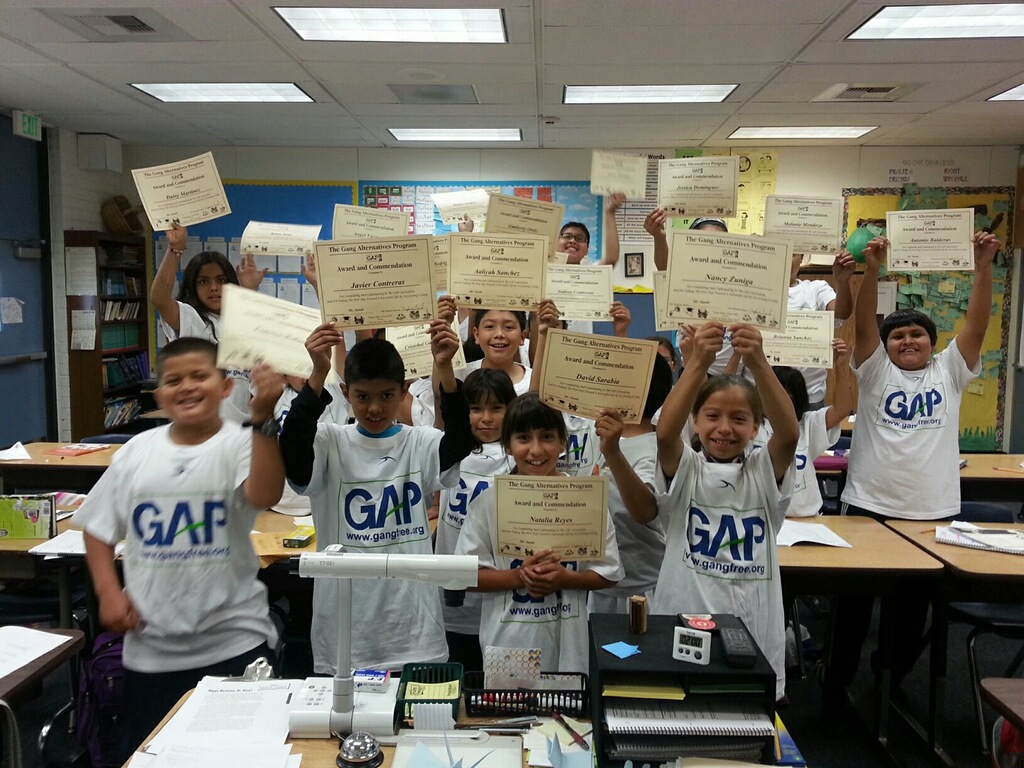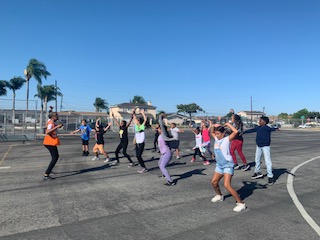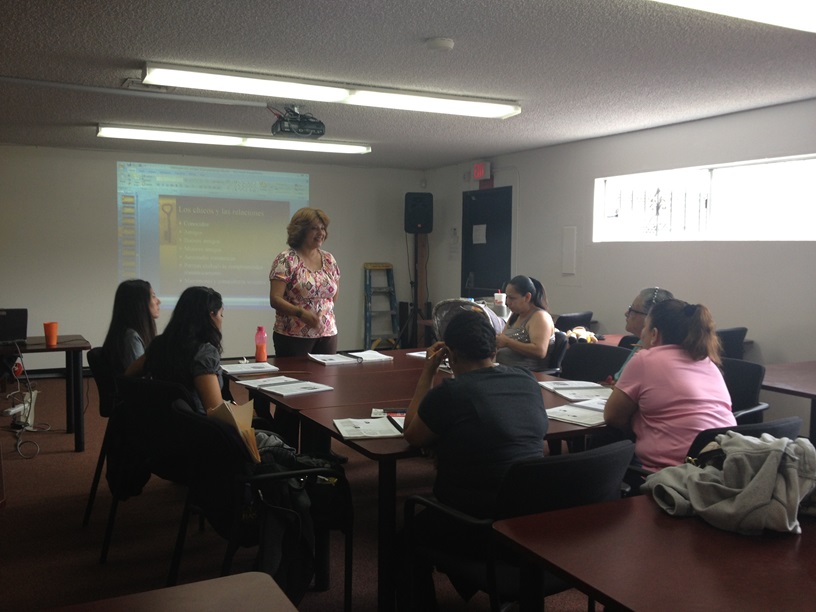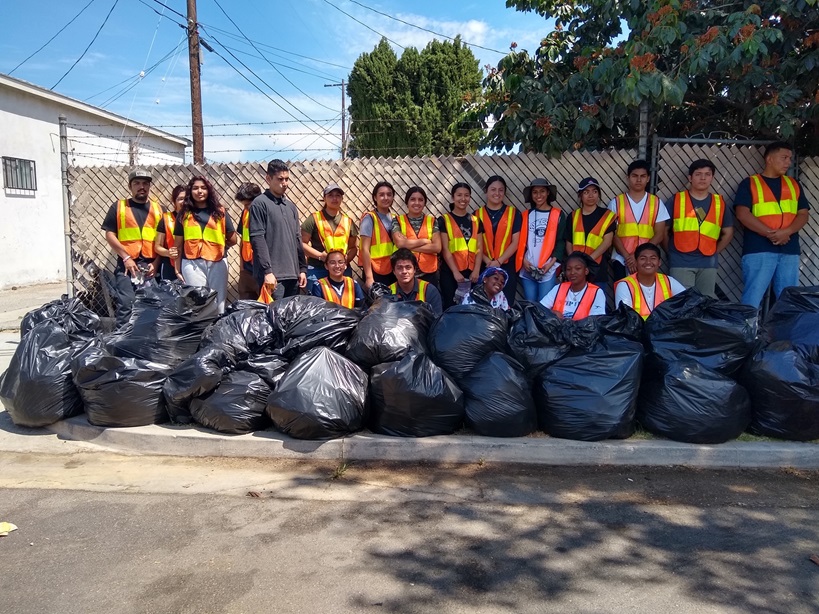
Gang Alternatives Program (GAP): An Ounce of Youth Gang Prevention is Worth a Pound of Rehabilitation
Gang Alternatives Program (GAP) is predicated on the belief that when it comes to gang prevention, you’ve got to stop kids from joining them in the first place, or as Benjamin Franklin famously said, “An ounce of prevention is worth a pound of cure.”
To that end, GAP (gangfree.org) has developed robust programs to combat gang crime by stopping it before it begins. GAP offers gang prevention curricula in Los Angeles County elementary and middle schools, as well as an afterschool program that offers a warm, safe place where kids can get help with their studies with wonderful role models to offer mentorship and caring. In addition, GAP offers youth employment and community service opportunities. Parent education is not neglected—engaging parents and bringing them up to speed on what they need to know about gangs and gang prevention goes a long way toward keeping children safe.
Education is key for kids to get ahead. In areas like Los Angeles County, where gangs are a serious problem, keeping kids from joining gangs is the best way to keep them off the streets and at their studies. We put some questions to SueAnn Ballat, executive director of GAP, our latest Kars4Kids small grant recipient, to learn more about this work:
Kars4Kids: The central initiative of GAP (gangfree.org) operates throughout Los Angeles County. Can you tell us something about the prevalence of gangs and gang culture in Los Angeles? Are Los Angeles youth more likely to join gangs? What makes them vulnerable to falling in with gangs?
SueAnn Ballat: For over a century, LA County has dealt with the prevalence of gangs and graffiti, and has been coined the “ gang capital of the world.” (Catalyst California, formally the Advancement Project Report). With thousands of gang networks on the streets and online, gang crime and violence requires a comprehensive gang prevention strategy. Incarceration of a single criminal in California costs an average of $106,000 per year[1] per individual, as compared to less than $300 per year, per youth to help prevent them from being involved in a life of gangs, crime and violence. Research studies show that Los Angeles youth who lack additional supportive and caring adults in the home are more susceptible in participating in gangs and/or gang crimes.
- In 2020, youth under 18 made up about 8% of all murder victims.
- In 2020, 55% of youth homicide victims were Black, 26% were female, and 66% were killed with a firearm
- Of children living in high crime areas, 90 percent are exposed to violence as a victim or witness.
- Of children living in high crime areas, 27 percent show symptoms of post-traumatic stress disorder (PTSD).
Kars4Kids: GAP has a second initiative, the Gangfree Life Academy® which, if we understand correctly, has the same goal of gangfree.org of keeping kids from joining gangs. Can you explain the difference between your two initiatives, and why you needed both?
SueAnn Ballat: To support and uplift future leaders in our community, the Gangfree Life® Academy is a professional development program to prepare and teach My Gangfree life® curriculum in elementary and middle school classrooms, community centers, expanded learning programs, and other group settings. A local Gangfree Life® leader is important because it gives local control to the school/city/county/nonprofit. This also aligns with gangfree.org as it continuously adopted the elements and best practices gathered from around the country, as evidenced by program evaluation and research.
Kars4Kids: Can you give us an overview of your Gang Prevention Education program? What are the ages of the participants, and why do you tailor this program to youth in these particular age groups? What is the difference between your 8-week program and your 6-week program?
SueAnn Ballat: Modeled after the Office of Juvenile Justice and Delinquency Prevention (OJJDP), Gang Resistance Is Paramount (G.R.I.P) model, its prevention program provides a comprehensive framework for addressing gang-related issues, including prevention strategies for primary and middle school students. My Gangfree Life® curriculum, exposes both the realities of gang involvement and the alternatives available to young people. The lessons begin with discussing the history of gangs, gang dress, graffiti, and gang behaviors. Other lessons examine the consequences of gang involvement and its effects on families and their futures. The students are introduced to positive alternatives and techniques for achievement, and are encouraged to set goals and make positive lifestyle choices. Teachers and students participate in pre and post surveys to gauge learning and program outcomes. Depending the grade-level, some of the curriculum will run 8-weeks or 6-weeks.
Kars4Kids: How does GAP’s afterschool program differ from the usual afterschool offerings? What do you offer the kids in this program?
SueAnn Ballat: GAP’s expanded learning program differs from the usual expanded learning by providing enrichment services to students to increase their academic performance and physical activity. GAP has created a LIBERTY® social emotional learning program with physical education, our STEAM Mobile Learning Vehicle (MLV), arts, music, dance, sports, homework completion, and tutoring assistance. The STEP UP! Program runs Mondays through Fridays from 2:30pm to 6:00pm during the school year. Our program is unique, as it offers consistent gang prevention programming with mentors and role modeling that provide students with a positive and safe learning environment, thereby allowing parents the comfort of knowing that their child is safe, learning and being taken care of.
Kars4Kids: Talk to us if you would about GAP’s Seasonal Youth Employment Program (SYEP). Is this for high school students? How does this program tie in with gang prevention?
SueAnn Ballat: Youths between the ages of 15-18 years of age are offered paid on-the-job work experience and this teaches them valuable employment and life skills. Local youths work outside in beautification projects around the City of Los Angeles. Along with the work experience, youths build collaboration and communication skills. Youths attend educational workshops to develop career awareness, work-related social skills, financial literacy, and lastly, build pride in working and being part of keeping their community clean and safe. Youths learn positive skills and build a community, which strongly tie in with preventing young people from joining gangs.

Kars4Kids: GAP has offerings for parents, too. What can you tell us about your programs that are geared toward parents?
SueAnn Ballat: My Gangfree Life® Family Network, offers the Parent Project® and Teen program for parents and guardians to learn effective prevention as well as intervention techniques in order to help their children through difficult times at home and in their community. Parents are given awareness of the many challenges youths are faced with every day at school, in the community and at home. GAP offers the courses in significant locations such as our GAP learning office, schools, collaborative agencies, housing authority complexes and juvenile detention facilities. GAP also provides families with volunteer opportunities and event participations.

Kars4Kids: Talk to us about graffiti. What is the connection between graffiti and gang culture? How is GAP addressing the issue of graffiti?
SueAnn Ballat: Graffiti abatement is one of the core components of GAP’s comprehensive gang prevention strategy. It addresses the requirement that in order for gang prevention to succeed a community must be seen to be actively resisting the influences of gang culture. GAP is in the neighborhoods on the street seven days a week, taking down graffiti and removing the signs of vandalism.

Kars4Kids: GAP programs have been created in line with the US Surgeon General’s Report on Youth Violence on what does and doesn’t work to prevent gang violence. What strategies work, and what strategies are ineffective for this purpose?
SueAnn Ballat: My Gangfree Life® programs and services provides all the best practices needed for a comprehensive gang prevention strategy. The US Surgeon General’s Report on Youth Violence identifies which prevention strategies work and which do not based on scientific study.
DO WORK:
- parent training
- school-based social skills training in conjunction with parent training for students
- home visitation and case management
- multicontextual programs including social skills training, parent training, home visitation, academic tutoring, and classroom behavior management
- academic improvement programs including mentor tutors
- moral reasoning, social problem-solving, and thinking skills training
DO NOT WORK:
- peer counseling
- peer mediation
- peer leader programs
- academic nonpromotion (holding children back a grade due to risk factors alone)
- nonspecific universal prevention programs
Kars4Kids: You offer your gang prevention education programs to 2nd, 4th and 6th grades. Do these programs take place in the classroom during school hours? Why these particular grades, and why only every other year? Is this a budgetary issue?
SueAnn Ballat: There is a need in our schools prevention education to all of your youths, due to the influence that surrounds them. My Gangfree Life® programs and services is in the stages of development to include all primary grades in its curriculum. And due to budget constraints, GAP would provide services through funding support by city government, school district, or through corporate funds that would prioritize the need for gang prevention.
Kars4Kids: What’s next for Gang Alternatives Program (GAP)?
SueAnn Ballat: Due to a changing economic landscape and changing program priorities at the city, county, school district, state, and federal levels, GAP is implementing a strategic plan to meet current and future needs. GAP’s focus will be to improve its visibility; expand its reputation and recognition; streamline its operations; and increase its capacity to manage development and future growth. GAP will focus on strengthening its advocacy and activism; and will plan, develop, and implement changes to the branding, identity, and visibility of the agency. We hope to help more people understand the power of gang prevention and GAP’s leadership role in preventing young people from joining gangs.
[1] Legislative Analyst’s Office-The California Legislature’s Nonpartisan Fiscal and Policy Advisor